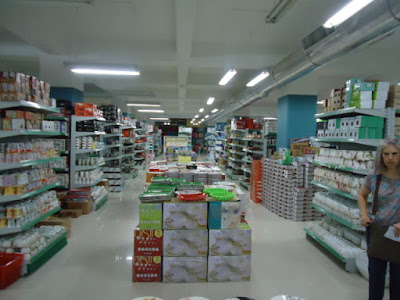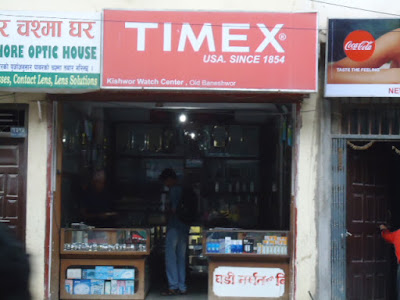It will help you to know that this blog is written by Scott. I am a nice average person who is married to a highly intelligent, well educated over-achiever. Lear was the valedictorian of a large and sophisticated high school in Austin, Texas. She was the outstanding female graduate from the University of Colorado. Our children took after her which is why they all have master's degrees and doctorates. I often wonder if I really belong in this family. Not only is Lear an over-achiever she is also a perfectionist who often achieves near perfection in her various endeavors. With that said let me tell you the story about Blankets for Babies.
As we told you in a previous blog, we (Latter-Day Saint Charities) purchased neo-natal breathing equipment for an intensive care unit that handles many pre-mature babies. I will do a separate post on that subject next. During our visits to the hospital Lear found out that they could use some blankets for the little babies in the ward next to the intensive care unit. This is the ward where babies are sent if they survive intensive care.
We try to involve our local church members in our projects when ever it is possible. That is not easy in Nepal since there is only one small branch of the church here with less than 150 members. Since the congregation and the hospital are both in Kathmandu this seemed like a golden opportunity to allow the church members to help out. Our church women's organization is called the Relief Society. They are the oldest, continuously operating women's organization in the United States. Lear met with the Relief Society president, Ukpati Gurung and several other sisters. They decided to make 40 Blankets. It seemed like such a simple project at first. Lear was assisted in this project by our house keeper, language coach and life skills mentor, Rukmina Magar along with two other sisters, Pratima GC and Meena Shresta. Lear, Rukmina, Pratima and Meena will be referred to henceforth in this post as the FM (Four Musketeers). Carol Oliphant, the wife in the other mission couple also helped.
First, as is the case with any well organized operation, adequate supplies had to be procured. What was needed was cloth, batting material, yarn and thread. The FM went to a bazar in Kathmandu that had an entire street of very small cloth shops. No Hobby Lobby and no WalMart. In fact all of these stores combined would easily fit in the sewing/craft section of a super WalMart. The bazar is a narrow, alley-wide street with numerous shops that are about the size of a single car garage or storage unit. After much looking and negotiating the cloth was found. The batting material, the stuffing for the blankets, had to be ordered. The shopkeeper said that the entire roll would have to be purchased which was not a problem. We would have to come back the next day to pickup the cloth and batting material since the batting had to be ordered in from a wholesale warehouse.
The next day we went to the bazar and to the cloth shop. The owner had sold some of the cloth that we were going to purchase to somebody else after we had left the shop the day before. That may seem odd to you Americans but it was no great surprise to our Nepali friends. So we had to agree on a substitute material. That took a while but it was negotiated and agreed. Please note that prices are not posted in most shops in Nepal. You negotiate every price. You learn early to ask "Koty Ho?" That laterally means "what cost is?" The verb is at the end of the sentence in Nepali. The merchant was paid and we were told that the roll of batting was just in front of the store. That is when the fun began. The roll was over 6 feet high and about 4.5 feet in diameter. It was nearly as big as a taxi. A Nepali taxi is small and needs to be since the streets are often very narrow. No Problem, Rukmina and Pratima went out on the street and found a taxi with a luggage rack. We tied this very large sausage looking thing to the top to the taxi. It looked like a double decker taxi. The taxi home was a humorous ride. The taxi kept stalling out usually in the middle of crowded intersections. We got a lot of strange looks. You never know what those stupid Americans will do next. Look at that huge object on that taxi. No wonder it is not running correctly. If they were like normal people they would get out and push. Ha Ha.
About two weeks later the Relief Society gathered at a sewing center. Out of what seemed me like utter and complete chaos came over 40 blankets that only needed to be quilted in order to hold the batting in place. The blankets were not perfect but the Christian charity that went into their manufacture was as perfect and pure as I have ever witnessed. My over-achieving, highly intelligent, perfectionist spouse had done it again. She had gone above and beyond and worked a small miracle. In this far away place church sisters performed a consummate act of charity to help the most vulnerable and newest members of the human race.
Cutting the cloth. Shanti is doing the cutting. Sister Oliphant is in the foreground.
Sister Adhikari is great with a treadle sewing machine. Almost all of the sewing machines are treadle and operated by pumping a pedal with your feet.
Ukpati, RS president sewing.
Delivering the blankets to the hospital. We had a very nice ceremony.
Lear handing a bag of blankets to doctors. The doctor on the right is a good friend of ours, Dr. Simmi. She is conducting a study correlating survival of premature infants with the use of the breathing equipment we donated to the hospital. She is a remarkable physician and an fine young woman.
Rukmina handing a bag to hospital personnel. Rukmina is the Primary President in our branch and our most valuable helper. We love her and respect her more than I can say.


























